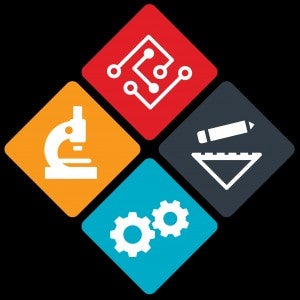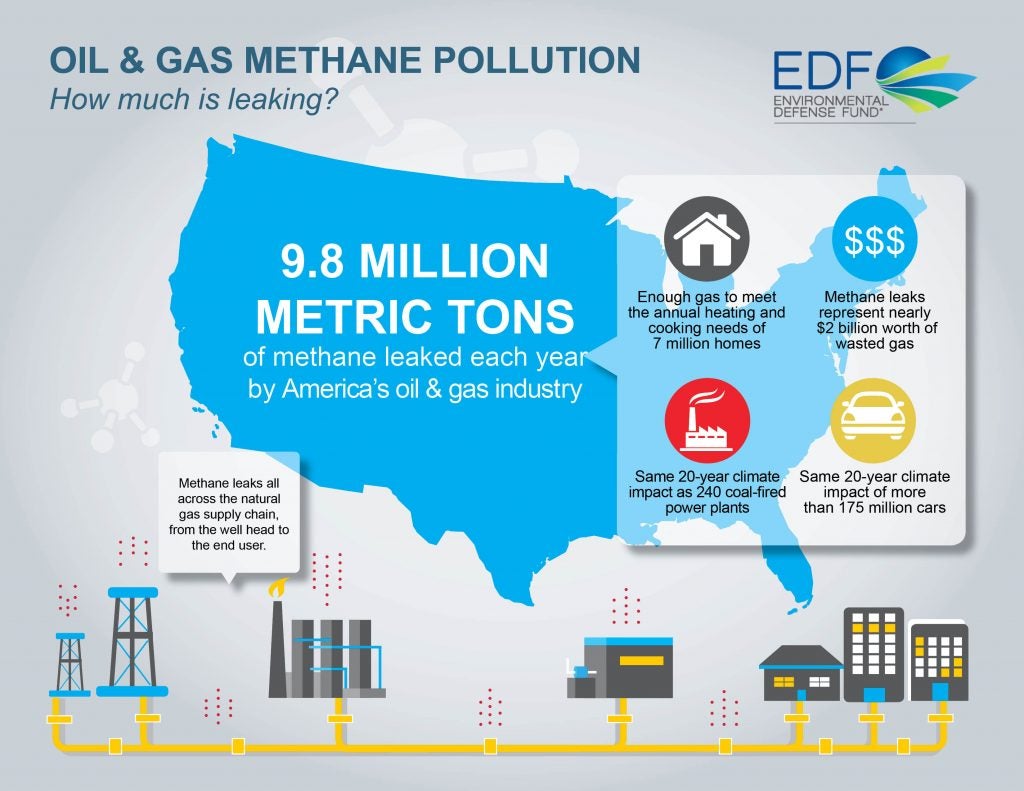Across the country, oil and gas companies allow massive quantities of natural gas, worth billions of dollars, to leak into the air — and when it happens on federal lands, it’s the American public who loses. A new interactive tool lets users see, in real time, just how much American-owned gas private companies waste every second.
Read More
Energy Exchange
$1.5 billion and counting: real time “waste ticker” reveals value of publicly owned gas that private companies waste
The Value of Pursuing a Rational Middle in Polarized Times
 At Energy Dialogues’ North American Gas Forum last month, I had the opportunity to participate on a panel moderated by Gregory Kallenberg of the Rational Middle. While the panel pre-dated the presidential election, the topic of constructive engagement through rational discourse is now more important than ever.
At Energy Dialogues’ North American Gas Forum last month, I had the opportunity to participate on a panel moderated by Gregory Kallenberg of the Rational Middle. While the panel pre-dated the presidential election, the topic of constructive engagement through rational discourse is now more important than ever.
We explored how environmental groups, industry, and other stakeholders need to come together to rationally discuss and collaboratively act on the challenges of meeting rising energy demand while addressing real and growing environmental risks.
The still principally fossil-based energy system, which includes natural gas, is not the only cause of climate change, but it is the largest. And so a range of stakeholders, from protesters holding signs, to investors with a long term interest in the future of natural gas, to industry consumers, are looking with increasing criticism at fossil fuels. That was true before the election, and it’s true today. They’re asking: How can we reconcile the environment we want to protect for the future with the traditional energy and feedstock resources we are using now? Read More
Latest EPA Greenhouse Emission Numbers Demonstrate Success Of Methane Standards
This week sees the release of new figures from the U.S. Greenhouse Gas Emissions Reporting Program (GHGRP), which includes self-reported, large facility-level emissions data for 2015.
The good news is that methane pollution from the oil and gas industry is down slightly, thanks to a combination of stronger safeguards starting to take effect, along with a decline in new drilling projects due to an overall market cooling.
Operators report that methane pollution from onshore oil and gas production is down about 3.8% in 2015 from 2014. However, overall greenhouse gas emissions from all reporting segments in the oil and gas sector are only down 1.6%.
Sensible methane standards are starting to work
Some in industry will undoubtedly point to the new numbers as evidence that new emission rules are unnecessary. In fact, the figures show that sensible safeguards are responsible for much of the progress. Read More
Time to Tell the EPA What Works in Methane Mitigation
 The Environmental Protection Agency (EPA) has committed to regulate existing sources of methane from the oil and gas industry, and it is asking for information from the methane mitigation industry to make sure the rule’s approach and requirements account for recent innovation. The EPA’s announcement comprises the U.S. portion of the North American commitment to cut methane by up to 45% from the continent’s oil and gas industry by 2025. Existing sources in the oil and gas industry make up over 90% of the sector’s emissions, which contribute over 9 million tons of methane pollution annually.
The Environmental Protection Agency (EPA) has committed to regulate existing sources of methane from the oil and gas industry, and it is asking for information from the methane mitigation industry to make sure the rule’s approach and requirements account for recent innovation. The EPA’s announcement comprises the U.S. portion of the North American commitment to cut methane by up to 45% from the continent’s oil and gas industry by 2025. Existing sources in the oil and gas industry make up over 90% of the sector’s emissions, which contribute over 9 million tons of methane pollution annually.
The opportunity is open now to tell the EPA what works in methane mitigation.
Emission standards for existing sources of methane will not only reduce greenhouse gases but could also create new markets and customers for the growing mitigation industry. The regulation will likely start with one or more approved work practices to find and fix methane leaks, describing a technology or group of technologies that must be used in a certain manner. For example, EPA’s New Source Performance Standards for new and modified sources of methane required the use of optical gas imaging cameras or “Method 21” instruments. With far more existing sources of methane than new or modified sources, being part of an approved work practice for existing sources would open up a significant market opportunity. Read More
It’s Time for the Coal Industry to Come Clean

By now you have all heard the coal industry claims that the Clean Power Plan will kill the coal industry. This week federal judges hearing oral argument on the rule will no doubt hear the same. A new report by Sue Tierney of the Analysis Group clearly demonstrates just how misleading these claims are.
Dr. Tierney’s analysis examines changes in the industry since the 1970’s to unpack the factors that led to coal’s rise through 2000 and steady decline since. It shows how shifting economics for energy production have caused cost-effective lower-emitting natural gas generation and zero-emitting renewables to steadily out-compete coal and erode its market share. The analysis also shows how the industry made a large number of badly misplaced bets that have left them with over-burdened balance sheets, and facing bankruptcy as a result of these self-inflicted wounds.
Citing analyses by the Energy Information Administration and others, the analysis shows the irreversibility of these trends as coal is simply no longer the cheapest form of generation. These trends will also continue to drive a transition to cleaner lower-carbon fuels regardless of the fate of the Clean Power Plan. The clear implication is that industry should focus on preparing for the future and adapting to these new market conditions as opposed to fighting long-delayed protections that will help secure a more stable climate, a sustainable economy and vital public health benefits.
The analysis also examines the significant job losses seen since 1980, and finds that here too the blame has been misplaced. Data clearly show that decades ago, increasing productivity and a shift from eastern to western coal led to significant job losses even while the industry’s overall production was in a period of dramatic growth. Remarkably, coal mining jobs fell by one-half from 1975 to 2000 even as coal production increased by more than 60 percent.
What to Look for In Today’s House Committee On Science, Space, And Technology hearing On Methane
 This morning, the House Committee on Science, Space, and Technology Subcommittee on the Environment will hold a hearing on the EPA’s methane emissions regulations, during which I will offer some insights into how and why the oil and gas industry should reduce methane emissions.
This morning, the House Committee on Science, Space, and Technology Subcommittee on the Environment will hold a hearing on the EPA’s methane emissions regulations, during which I will offer some insights into how and why the oil and gas industry should reduce methane emissions.
This is the first hearing about the methane issue, and while the panel is tipped in favor of industry and we don’t expect testimony to cover all the facts, here are a couple things to look out for as the discussion unfolds.
Industry representatives who are not in favor of regulations will try to make the following points:
- They will say that the oil and gas supply chain isn’t the problem.
- They will say that the oil and gas industry is more than capable of self-regulating.
- They will say that regulation will cost a struggling industry too much, and will put American jobs at risk.
None of these statements is true.
What is true is the fact that methane poses a significant threat to our environment. Over the first 20 years following its release, methane is some 84 times more potent than CO2 in terms of the climate damage it does. While CO2 represents a continuing, long-term threat in the form of accumulated, long-lived and rising atmospheric concentrations, methane drives near-term climate effects. The result is that 25% of the global warming we are experiencing now is due to methane emissions. Read More










